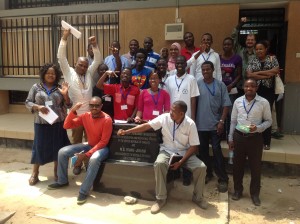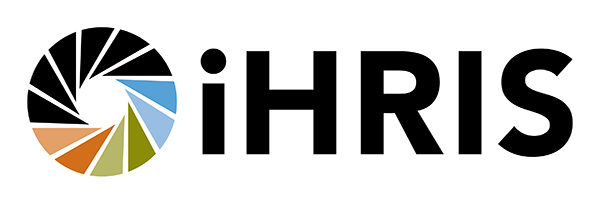My Experience as a Facilitator of iHRIS Academy 2013
I was among those who gathered in Dar es Salaam for the iHRIS Academy 2013. People came from as far as Nigeria, Botswana, Namibia, Malawi, and Rwanda. It was a great event for me getting to meet these many people whom I had talked with many times virtually.
It was really a good opportunity for me participating as one of the facilitators of the Academy. This was a chance to share my experience of working with iHRIS.
Before the kickoff, the facilitators had a three-day meeting to prepare the training manuals and materials and set the modality of how we should run the Academy.
 Monday, August 12, 2013 was the day the Academy started. Despite people arriving as late as 3:00am the previous night, they still were able to show up at 8:30am for the kickoff. From the introductions, I could tell how this was an opportunity for live networking, as many of us had been communicating virtually via the iHRIS Global Community Group.
Monday, August 12, 2013 was the day the Academy started. Despite people arriving as late as 3:00am the previous night, they still were able to show up at 8:30am for the kickoff. From the introductions, I could tell how this was an opportunity for live networking, as many of us had been communicating virtually via the iHRIS Global Community Group.
The session started by sharing experiences from different implementing countries. A good experience worth mentioning was shared by the participants from Zanzibar, where they exported data from iHRIS Manage into Excel spreadsheets and created very nice graphs, as Excel was the tool they were used to working with. Being an open-source program, iHRIS may not cater to very specific user requirements, so creative solutions are appreciated.
Another great experience was shared by the participants from Tanzania, where the iHRIS system has been rebranded as the Local Government Human Resource Information System, or simply LGHRIS, and it is used by the ministry responsible for all civil servants (government employees). It has been installed into all district councils (about 160 in number). So we can see that iHRIS is not only useful for tracking and managing the health workforce, which it was primarily designed for.
Day 2 went on with the sessions, and here there was a change of plans. We had to get into specific challenges that countries face in implementing iHRIS. This approach would involve everyone who attended the Academy: the technical people who manipulate the system and the human resources professionals.
Day 3 was business as usual: developers and human resources coming together trying to solve the different challenges they face. Plus everyone who came to the Academy had Ubuntu installed on their laptops and then installed iHRIS Manage.
A guest presented how iHRIS is used to track Most Vulnerable Children (MVC) Project Volunteers in Tanzania. This is a project by IntraHealth International. The presentation was to be backed up by a live demonstration of the system; however, there was no Internet connectivity in the boardroom. We liked this presentation because it gave participants a chance to get outside and walk to another place where the presentation would take place.
After the presentation, it was time for participants who liked to go around and get a feel for the city. Everyone was eager to go see Kariakoo, and the experience that everyone brought back was “... the place is full of everything.”
Day 4 started with a recap of the past three days, and then a schedule for the day was given. Immediately after the first session, we split into groups, and the HR professionals went out to see how iHRIS is used in Tanzania. This tour took them to Kinondoni Municipal Council in Dar es Salaam (one of the largest municipalities) and to Christian Social Services Commission (CSSC), an ecumenical body that oversees provision of health services by the member denominations. The developers remained in the boardroom to discuss some of the technical challenges and have a session on data import script,s and later they learned how to do customizations.
Friday was our final day being together in one room. The morning session was a presentation on backup systems, including a case study showing how they had been implemented in Tanzania. This presentation was followed by a tutorial on creating custom reports on the systems. All of these final presentations got a lot of attention; however, the major challenge for the presenter was to make sure that those who already knew the information didn't get bored while at the same time not ignoring those who are being introduced to iHRIS for the first time.
After the presentations, we held a short certificate award ceremony outside the boardroom, where the Principal for the College of Information and Communication Technology of the University of Dar es Salaam congratulated both the organizers and the participants for coming together and sharing their experiences and networking.
It was recommended by many that such future events separate developers from implementers so that there is enough room for each group to share their experiences and expertise accordingly, and to provide more time for in-depth discussions on the training topics.
In the end, everyone agreed that the iHRIS Academy was a great event for networking and sharing our different experiences working with iHRIS.
